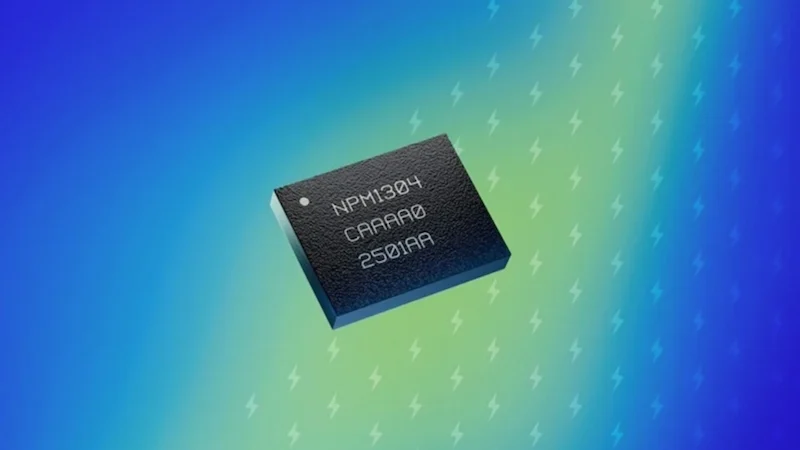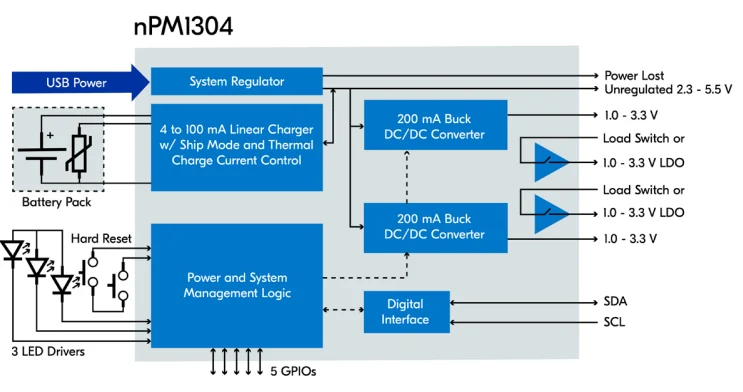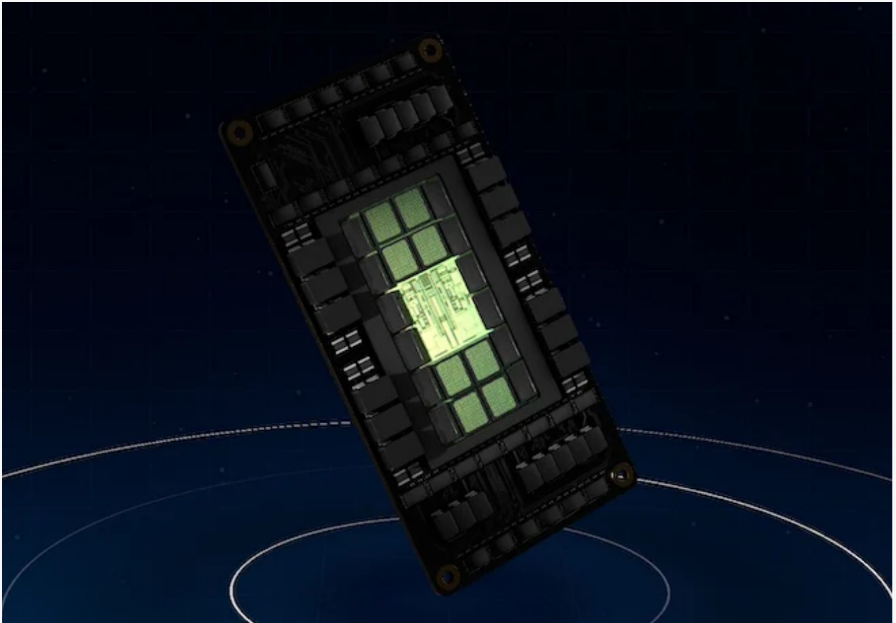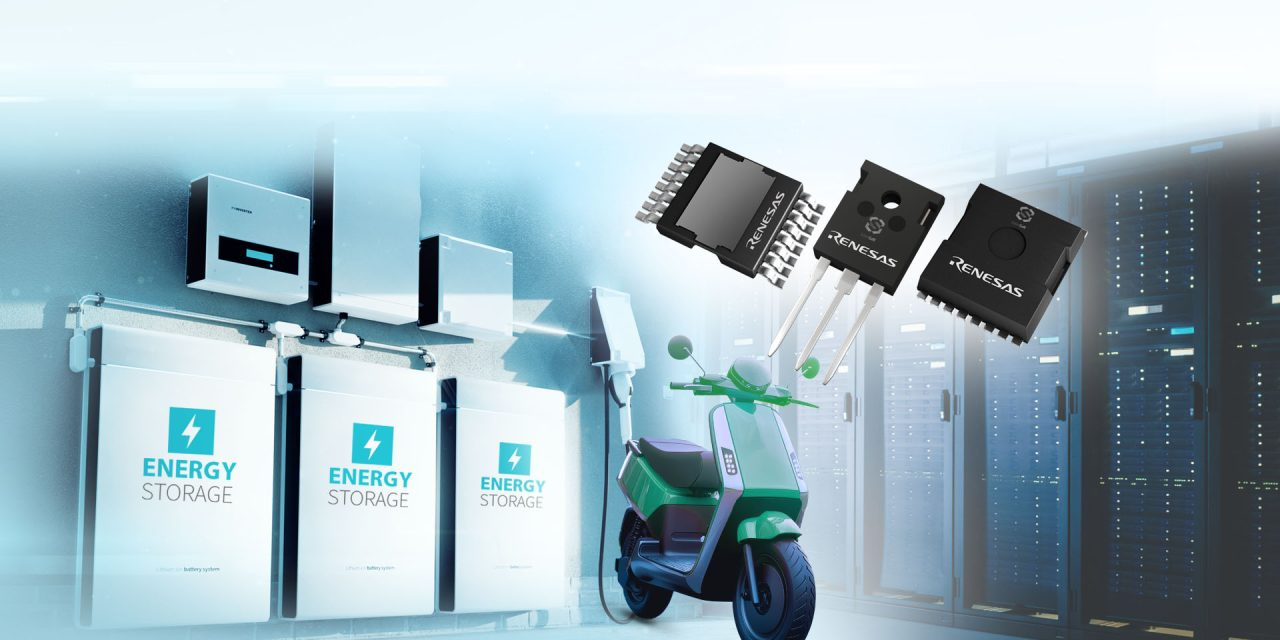The new power-management IC integrates advanced system management and ultra-low power fuel gauging in a single chip.
Nordic Semiconductor recently introduced a new power-management IC (PMIC) designed specifically for compact electronics with small battery capacities.

The nPM1304 complements Nordic’s nPM1300 PMIC. Image used courtesy of Nordic Semiconductor
Dubbed the nPM1304, the chip is the successor to the nPM1300 and aims to support next-generation wearables and sensor applications that demand a hard-to-achieve combination of power efficiency and miniaturization. Let’s take a look at the details of the new PMIC and its underlying technologies.
A PMIC for Small Devices
The nPM1304 delivers comprehensive power management that includes two 200-mA buck regulators and two 100-mA load switches (or configurable 50-mA LDOs), offering four independently controllable power rails. Each rail supports fine-grained voltage regulation between 1.0 V and 3.3 V, and the device also integrates a USB-C compatible input regulator with a 1.5-A current limit that supports input voltages from 4.0 V to 5.5 V and tolerates 22-V transients.
The nPM1304 features a model-based fuel gauging system, which estimates battery state of charge using voltage, current, and temperature metrics. According to Nordic, this method provides accuracy comparable to coulomb-counting solutions but consumes significantly less power—down to 8 µA in active mode and zero in sleep mode. By contrast, traditional fuel gauges may draw up to 50 µA actively.

Block diagram of the nPM1304. Image used courtesy of Nordic Semiconductor
Battery management includes a linear charger compatible with Li-ion, Li-poly, and LiFePO₄ chemistries, with programmable charge currents ranging from 4 mA to 100 mA and termination voltages adjustable between 3.5 V and 4.65 V. System-level features mirror those of the earlier nPM1300, including watchdog and boot timers, a power loss warning system, hard reset functionality configurable for one or two buttons, and recovery from failed boots. The PMIC also faces an I2C-compatible two-wire interface for dynamic developer system configurations, as well as five general-purpose I/Os and three LED drivers.
Coulomb Counting Fuel Gauging
Coulomb counting is a method used to estimate a battery’s state of charge (SOC) by tracking the flow of current into and out of the cell over time. It operates on the principle that if you know the battery’s total capacity and can measure the accumulated current usage, you can determine how much charge remains. This is achieved by integrating the current, measured by a sense resistor and analog front-end circuitry, starting from a known full-charge reference point.
While conceptually straightforward, coulomb counting has several drawbacks in low-power and miniature systems. The foremost limitation is error accumulation, where small inaccuracies in current measurement or integration drift over time can lead to significant discrepancies in SOC estimation. This necessitates periodic recalibration, usually based on voltage readings or a known battery state, which may not be practical in applications that experience constant low current draw or where full charge/discharge cycles are infrequent.

A host-side fuel gauge. Image used courtesy of Analog Devices
Coulomb counting also imposes a continuous power overhead. The sensing and integration circuitry must remain active during device operation. This can be problematic in designs with tight energy budgets. In some miniature applications, where average system current is in the range of a few hundred microamperes, the coulomb counter alone may consume a substantial percentage of the total available power.
Nordic’s model-based approach to fuel gauging diverges from this paradigm by using a dynamic battery model that interprets voltage, current, and temperature inputs to estimate the state of charge. This method is said to reduce energy overhead while maintaining high accuracy.
Power Management in a Single Chip
The nPM1304 targets a clear industry need for compact, power-efficient management solutions for small-battery embedded systems. It is currently available for sampling through Nordic Semiconductor’s sales network.



